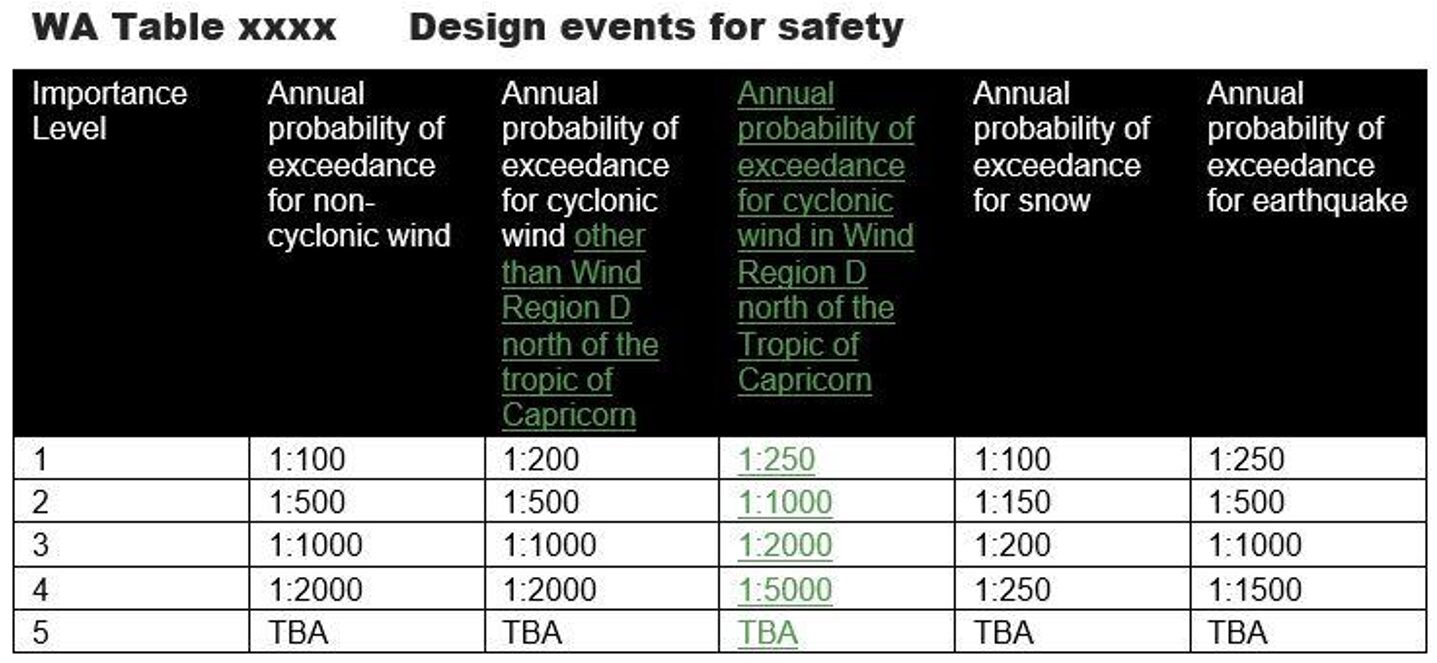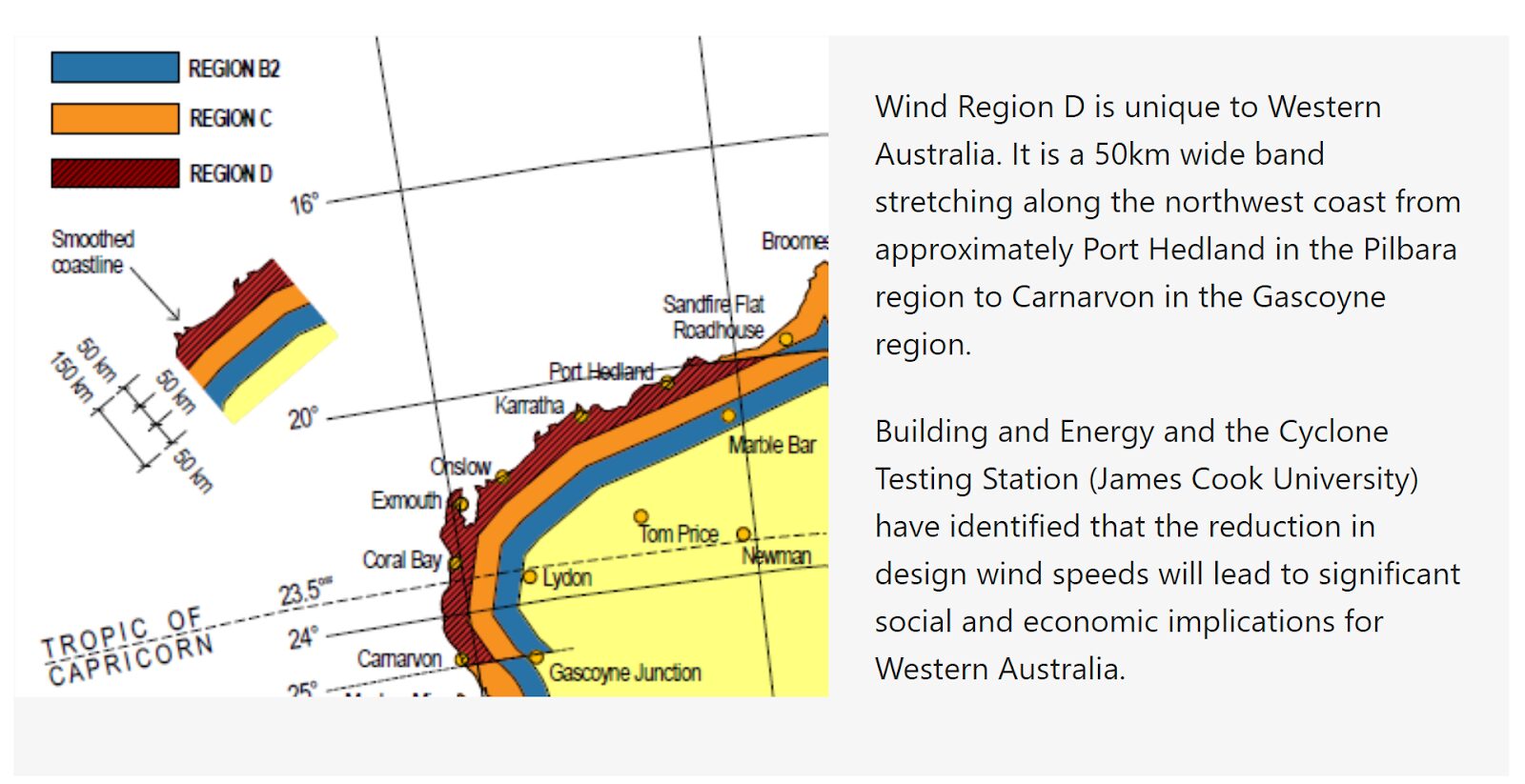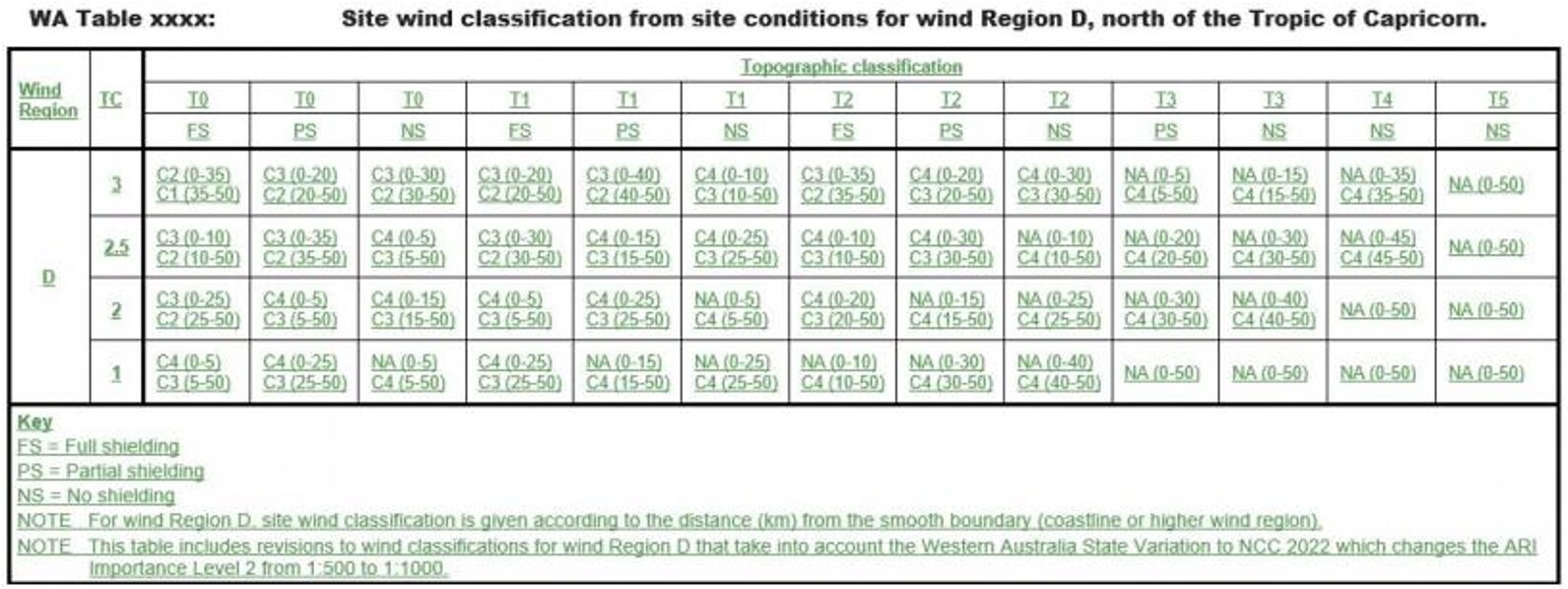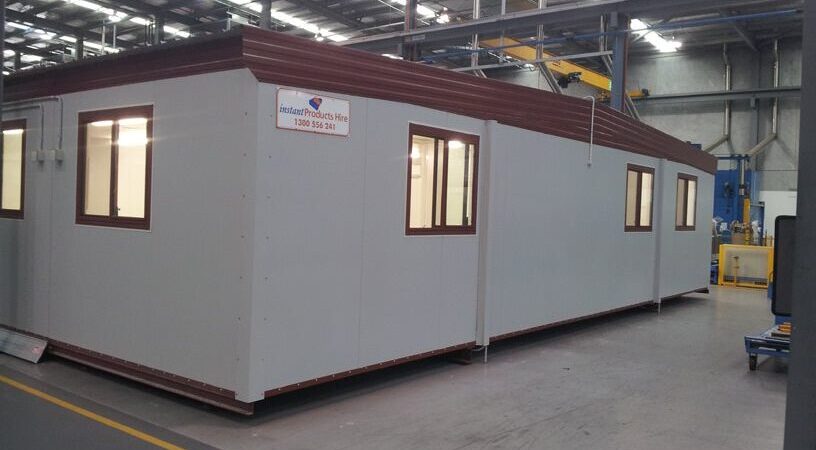In Western Australia, the classification system for cyclonic areas is crucial for ensuring safety and structural integrity of an infrastructure during a cyclone. This system, part of the National Construction Code (NCC) and Australian Standards (AS), particularly AS 1170.2 which deals with wind actions, defines the level of risk and the required building standards, based on an area’s expected weather conditions.
Table of Contents
Understanding the Importance Levels

Here are the key importance levels relevant to cyclonic areas in Western Australia:
Importance Level 1: This level is for buildings or structures with a low degree of hazard to life and property in the event of a failure, such as sheds or agricultural buildings.
Importance Level 2: This level covers buildings or structures that don’t fall into Importance Levels 1, 3, or 4. It typically includes residential buildings, commercial buildings, and most public buildings.
Importance Level 3: This level is for buildings or structures essential to post-disaster recovery or that have higher consequences if they fail. Examples include hospitals, emergency shelters, power stations, and other critical infrastructure.
Importance Level 4: This level includes buildings or structures with a high degree of hazard to life and property in the event of failure, such as major communication centres, emergency services buildings, and facilities that must remain operational during and after a cyclone.
The higher the importance level, the more stringent the design and construction requirements are to ensure that the structure can withstand cyclonic winds and related forces. This system ensures that critical infrastructure and buildings essential for community safety and recovery are built to higher standards to minimise risk and ensure continuity of services during and after cyclonic events.

What is the Annual Probability of Exceedance (APE)?
The annual probability of exceedance is a measure used in risk assessment and engineering to describe the likelihood that a particular event, such as a natural hazard or structural load, will be exceeded in any given year. It is commonly used in the context of designing buildings and infrastructure to withstand extreme events like cyclones, earthquakes, floods, and high winds.
Let’s Take a Look at it in Detail
Definition: The APE represents the probability that a specific level of an event (e.g., wind speed, flood level, seismic activity) will be exceeded in one year. It is expressed as a fraction or percentage.
Usage in Design: Engineers and architects use the APE to determine the design criteria for structures. For example, a building might be designed to withstand a wind speed that has an annual probability of exceedance of 1/100, meaning there is a 1% chance that this wind speed will be exceeded in any given year. This is often referred to as a 100-year event.
Return Period: The return period is the inverse of the APE. For example, an APE of 0.01 (1%) corresponds to a return period of 100 years. This means that, on average, such an event is expected to be exceeded once every 100 years.
Significance in Risk Management: Understanding and using the APE helps in assessing risk and ensuring that structures are designed to be safe and resilient. Higher importance level structures (such as hospitals or emergency facilities) will be designed to withstand events with lower APEs (e.g., 0.002 or 0.1%) due to their critical nature and the higher consequences of failure.
Examples of APE in Cyclonic Areas
Residential Building: Might be designed for a wind speed with an APE of 0.02 (2%), meaning a return period of 50 years.
Critical Infrastructure: Like a hospital, it might be designed for a wind speed with an APE of 0.002 (0.2%), meaning a return period of 500 years.
By using the APE, designers can ensure that buildings and structures are appropriately resilient to the most likely and potentially damaging events that could occur over their expected lifespans.

Practical Example
A ratio of 1:100 for the annual probability of exceedance (APE) means there is a 1% chance that a particular event (such as a specific wind speed, flood level, or earthquake intensity) will be exceeded in any given year.
Here’s a Breakdown of What This Means:
Probability: An APE of 1:100 indicates a 1% (or 0.01) chance that the event will occur in any given year.
Return Period: The return period is the reciprocal of the APE. For an APE of 1:100, the return period is 100 years. This means that, on average, this event is expected to occur once every 100 years.
Implications for Design: When designing structures, an APE of 1:100 is used to ensure that buildings and infrastructure can withstand an event that has a 1% chance of being exceeded each year. This level of design criteria is typically used for standard residential and commercial buildings.
Understanding the Context
Risk Management: Designing for a 1:100 event is a balance between safety and cost. Higher-important structures, such as hospitals or emergency facilities, might be designed for lower APEs (e.g., 1:500 or 1:1000) to ensure greater resilience.
Perception of Risk: While a 1:100 event might seem rare, it is important to understand that over the lifespan of a structure (e.g., 50 years), the cumulative probability of experiencing such an event is higher. For example, over 50 years, the probability of experiencing a 1:100 event at least once is approximately 40%.
Essential Upgrades for Cyclonic Wind Standards in Western Australia
Understanding the importance levels and the annual probability of exceedance (APE) is vital for designing buildings and infrastructure that can withstand cyclonic events, ensuring safety and resilience in the face of natural disasters. For those exploring efficient and adaptable building solutions, demountable buildings offer a compelling advantage.

Instant Transportable Offices, located at 18 Rogers Way, Landsdale WA 6065, provides a wide range of demountable buildings for sale, ensuring quality and flexibility for your needs. Contact us at 08 6325 4084 to discuss how we can help you with your building needs and ensure your structures are built to withstand the toughest conditions.

Managing Director at Instant Transportable Offices
Scott Rawson is the Managing Director of Instant Products Group, a specialist group of companies that offer portable building solutions, including sea containers, transportable offices, and portable sanitation products. With more than 20 years of experience in various management positions and a finalist in the WA Business News 40 under 40 awards in 2013, Scott is a highly motivated entrepreneur that has a passion for designing products to suit the needs of individual markets. From the creation of Instant Products Group over 20 years ago, he has successfully grown the group into a multi-million dollar corporation and his success is widely recognised in Western Australia. Scott is dedicated to expanding Instant Products Group nationally and providing high-quality products to a range of sectors, including mining, engineering, property development, and government.

